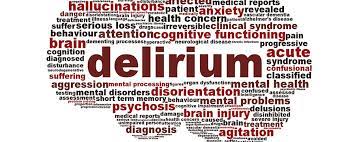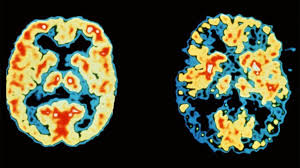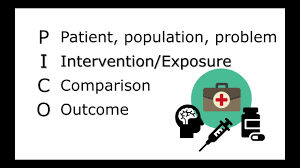Want help to write your Essay or Assignments? Click here
Self Harm: Safe Guarding in Health and Social Care
Self harm is a complex issue not only in its definition but also in relation to the insufficiency of data available with regards to the patterns and frequency of this subject across the globe. It is important to not that there is no “universal definition” of self harm. Moreover, diverse views have been raised concerning the causes and risk factors among individuals that harm themselves or others. Generally, self harm which is also referred to as self injury is best understood to entail an individual causing intentional physical pain as a way of solving difficult or painful emotions.
According to the study conducted by Hawton et al,it was determined that some people may harm themselves or others as a means of communicating their distress to the general public (Hawton et al, 2012). This disorder can also be an act of rebellion and the attempt to individualize oneself, a manner of relieving intense anxiety temporarily, a way to regulate pain, an effort to manage emotional numbness, or more still an effort to manipulate other people.
Individuals who harm themselves or/and others may develop an immediate sense of relief by partaking in it. However, it is worth noting that this feeling is a temporary solution the feelings that were distressing them initially will end up recurring once more. Additionally, chronic self harm can result in the development of irreversible damage to the body and/or permanent scarring. This paper seeks to find out why some individuals are more vulnerable to abuse and harm self and others as well as the associated risk factors to this type of behavior.
Want help to write your Essay or Assignments? Click here
Causes of vulnerability to abuse and harm
Just like all other mental disorders, there is no single factor that predisposes a person to engage in self harm. In general, self harm results due to inability of a person to properly manage psychological pain in a manner that is healthy. Often, individuals who engage in this form of unhealthy conduct find it difficult to regulate, express, or understand their emotions. The factors that make individuals to be prone to abuse and harm self or others can be classified as follows;
Want help to write your Essay or Assignments? Click here
Social factors
These are ranked asthe commonest cause of abuse and harm due to the emotional distress that they arouse in people. Social factors that have been pointed predispose individuals to harm include;
- Having difficult relationships especially with friends and partners
- Having difficulties at school. This is seen commonly among the youth who work hard to obtain good grades but then they end up not getting the results they expected.
- Difficulties at work such as demotions, unfair treatment by senior workers and layoffs can also make people to be prone to harm and abuse.
- Bullying: This can be at home by older siblings, relatives, or neighbors. It can also be exercised in school or at work. An example of harm to others that was due to bullying is the recent case that was all over the news whereby an American student went to school with a gun and started shooting fellow students randomly (Fisher et al, 2012).
- Poverty, whereby a person has several responsibilities such as paying house rent, paying for children school fees, and providing the basic needs for his/her family. This is common among adults who end up being depressed and may subject their depression on their children by beating them up over petty reasons or even without any reason at all.
Want help to write your Essay or Assignments? Click here
- Drug and substance abuse: Individuals prone to alcohol and substance abuse disorders tend to be aggressive and are more likely to make claims of having suicidal thoughts or even previous suicidal attempts. In a recent study by Daine et al (2013) of about 6500 adults who enrolled in addiction treatments it was proven that individuals who had engaged in serious acts of violence such as murder, rape, and assault leading to serious injury were more than twice likely to report several suicidal attempts.
- Sexuality- Persons who come to terms with their sexual orientation such as being bisexual or gay may be a danger to themselves.
- Cultural expectations can promote vulnerability of harm to self. A good example is that of arranged marriages whereby ladies are often forced into marriages against their will or worse even at a tender age.
- Trauma can also enhance vulnerability of this disorder. Some causes of trauma include; physical or emotional, sexual abuse such as rape or domestic abuse. The death of a close family member or a close friend and having a miscarriage are also common predisposing factors.
Emotional Distress
Emotions have also been linked abuse and harm vulnerability. An unhappy situation or the distress from a traumatic experience can result in feelings of self hatred or low self esteem. These emotions gradually build up and it becomes difficult for people to seek help. Therefore, self harm or harming others may be a means of releasing these pent-up feelings.
They also indulge in this behavior as a way of coping with their problems. Usually, this is not a sign of seeking attention, but an indicator of emotional distress. Some of these emotions include; guilt, anger, anxiety, grief, numbness or emptiness, loneliness, silenced as a result of abuse, and a feeling of being disconnected from the world.
People that are more prone to harm themselves and others may be having difficulties in regulating or managing their emotions (Figley et al, 2013). Therefore, they use self harm as a means of managing the anger and tension. Further research also reported that such individuals are poorer in solving problems.
Want help to write your Essay or Assignments? Click here
Psychological Causes
These also increase the tendency of people to take part in abuse and harm. For example;
- People may be having repeated thoughts about harming themselves and they feel like doing it,
- Self harm can also be linked to borderline personality disorder- a disorder that causes instability in a manner that one thinks, behaves, or feels,
- Dissociation or loss of touch with oneself- self harm occurs without realizing it,
Organic reasons have also been associated with aggressive outbursts. Take an example whereby a person has damage to his/her frontal lobe or certain forms of epilepsy. In such circumstances, it is difficult to pin-point comprehensible argument for the expression of aggressive episodes.
Want help to write your Essay or Assignments? Click here
Risk Factors for Harming Self and Others
The risk factors of self harm and others are not static. Their value of prediction keeps changing depending on period they occur in a person’s development, social contexts, and the circumstances that one faces. They can be found in an individual, the surroundings, or the individual’s ability to react to the requirements or demands of the environment.
Some factors start manifesting as early as childhood while others do not appear at all until adolescence period or adulthood. Some risk factors entail the family, the school, the neighborhood, or the peer group. Risk factors will be classified as follows for clarity.
Want help to write your Essay or Assignments? Click here
Depression and mental illness
This is one of the most obvious risk factors for indulging in harm to self and others. According to the research conducted by Andover et al, it was proven that mental and addictive disorders result in almost 90% of the suicidal cases reported (Andover et al, 2012). At least one in every twenty youths suffers from mental disorders that are severe enough to impair judgment. However, the sad news is that less than 20% of these individuals receive treatment. Most of those who harm themselves suffer from depression.
School risk Factors
Individuals who view their instructors as not understanding or caring or do not coexist peacefully with their peers have vulnerability of harming others or themselves. They may be associated with the following features;
- Past suspension or expulsion for violent behavior
- Social isolation, aggressiveness in grade K-3 or hyperactivity
- Misbehaving in class, truancy, or being involved frequently in fights
- Severe disciplinary issues
Want help to write your Essay or Assignments? Click here
- Anger or frustration when handling school artwork or essays
- A student that has previously brought a weapon at school
- Academic failure when joining school
- Academic pressure from parents and guardians.
Community risk factors
Persons that are highly exposed to community violence are at severe risk of engaging in self-destructive behavior. This usually arises when one shapes his/her conduct after what they have learned and experienced in the community. Moreover, some youth who grow up without having meaningful connections with responsible adults lack the necessary guidance that they should acquire so that they may cope with their daily lives (Moran, et al, 2012). Other community risk factors include;
- Severe economic deprivation
- Easy accessibility to guns, weapons, and other dangerous equipments
- Poor community organization and low attachment in the neighborhood
- Few recreational activities for people in the community especially the youth
- Individuals who have engaged previously in vandalism and destruction of property
Want help to write your Essay or Assignments? Click here
Personal Risk Factors
- Persons who have been involved in violent behavior previously
- History of being bullied by friends, classmates, or relatives
- History of uncontrolled angry outbursts and tantrums
- Individuals who have previously bullied their peers and younger youths
- Aggression to animals
- Alcohol and substance abuse
- Previous attempts of suicide
- Fire- setting
- Persons that result in calling of names and cursing when they are mad
- Recent experience of loss, humiliation, or rejection
- Cult or gangs involvement
- Unstructured time
- Preoccupation with explosives and other weapons
- Does not own up and blames others for problems they are responsible for
- Often having mood swings and significant depression
Want help to write your Essay or Assignments? Click here
Family Risk Factors
- History of possession of a weapon and use by a family member
- History of being punished frequently
- Previous family violence
- Inconsistent or severe punishment
- Lack of support or proper supervision from parents and guardians
- Youth has a past history of abuse by a family member
- Individuals who grew up without clear expectations or standards of behavior being imposed on them by their care givers.
Cultural Risk Factors
Conformity issues and assimilation, variations in expectations and gender roles feelings of victimization and isolation can all increase the levels of stress and vulnerability of people. In addition, some cultures especially the Pacific and Asian cultures view self harm particularly suicide as a rational reaction to shame.
Want help to write your Essay or Assignments? Click here
Situational Crises
Daine et al argues that about 30% of individuals’ cases of abuse and harm to self and others are linked to an identifiable precipitating occurrence such as loss of a valued relationship, divorce of parents, the passing away of loved one, or sexual abuse. Normally, all these events coincide with other risk factors (Daine et al, 2013).
Conclusion
Some individuals view self injury engagement as a means of coping with their emotions. However, the troubles they are running away from will still be present even after their self-mutilation. Moreover, the relief that these individuals feel after involving themselves in self harm or abuse of others is usually short term.
Therefore, it can result in greater amounts of self-injurious conducts to acquire relief. Some people have even gone further and described self harm as an addiction. It is difficult to manage such behave just like any other compulsive behavior or addiction. However, proper management plan should be put in place to help these people fight the condition.
Some of the interventions that can be used include interpersonal treatments, therapies of problem-solving, and use of “emergency card” mode of interventions (Rossouw and Fonagy, 2012). Other treatment forms that have proved to be essential include dialectical conduct therapy which is administered often among individuals who self-harm themselves and/or others from time to time.
The burden associated with injury to self and others is often a heavy one, especially because people who engage in this behavior do it in private where they hide their secret from their loved ones and friends. They create a burden that is extremely hard to carry. This may result in more severe self injury to escape the feelings. Therefore, proper platforms should be established whereby such people can be access easily for counseling and support.
References
Andover, M. S., Morris, B. W., Wren, A., & Bruzzese, M. E. (2012). The co-occurrence of non-suicidal self-injury and attempted suicide among adolescents: distinguishing risk factors and psychosocial correlates. Child and Adolescent Psychiatry and Mental Health, 6(11), 1-7.
Daine, K., Hawton, K., Singaravelu, V., Stewart, A., Simkin, S., & Montgomery, P. (2013). The power of the web: a systematic review of studies of the influence of the internet on self-harm and suicide in young people. PloS one, 8(10), e77555.
Figley, C., Huggard, P., & Rees, C. (2013). First do no self harm: understanding and promoting physician stress resilience. Oxford University Press.
Fisher, H. L., Moffitt, T. E., Houts, R. M., Belsky, D. W., Arseneault, L., & Caspi, A. (2012). Bullying victimisation and risk of self harm in early adolescence: longitudinal cohort study. bmj, 344, e2683.
Hawton, K., Saunders, K. E., & O’Connor, R. C. (2012). Self-harm and suicide in adolescents. The Lancet, 379(9834), 2373-2382.
Moran, P., Coffey, C., Romaniuk, H., Olsson, C., Borschmann, R., Carlin, J. B., & Patton, G. C. (2012). The natural history of self-harm from adolescence to young adulthood: a population-based cohort study. The Lancet, 379(9812), 236-243.
Rossouw, T. I., & Fonagy, P. (2012). Mentalization-based treatment for self-harm in adolescents: a randomized controlledtrial. Journal of the American Academy of Child & Adolescent Psychiatry, 51(12), 1304-1313.
Want help to write your Essay or Assignments? Click here









